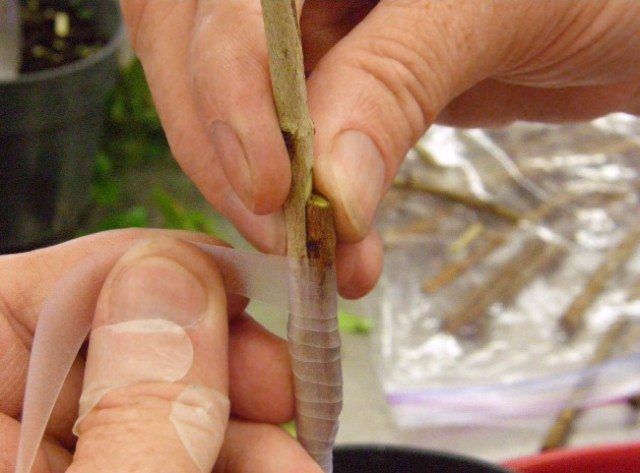Did you know that you can grow your own trees and bushes by propagating them from cuttings? Sure, you can buy young fruit trees and bushes from nurseries and garden centers in the spring, but a lot of these varieties they sell are highly dependent on chemical treatment to get a harvest.
The best fruit for organic growing where you live is likely found somewhere in your area. Walking through your neighborhood or driving around town, chances are you’ve seen (or will easily find) a wide variety of fruiting trees, bushes and vines that no one really tends, yet they continue producing food in abundance anyway. That’s hardy stock. It thrives in your climate and local soil types. Naturally, you’ll want to taste the fruit once you’ve located it. If it’s got good flavor – you’ve found the perfect specimen to propagate a clone for your own consumption.
Do be sure to get permission from the person who owns this plant or tree. Don’t make the mistake of thinking no one will notice. Most people will care less if you want to snip a few stems off a tree they’ve been neglecting for years – as long as you’ve gotten their approval for doing so.
Many woody plants will produce new roots from points on the stem where leaves were growing. You will need 1-2 of these bud eyes for below the rooting medium and a few more for exposure to air and light. The time of year when taking cuttings to root is important to your success, as is the type of growth your cutting is taken from. Older growth might prove impossible to root, or be slow at doing so. Newer growth on the ends of stems and branches will have a lot more youthful growing action in the cells.

When to take the cut and from where on the plant? Woody fruiting plants will be busy producing flowers and then fruit from late spring until fall, and cuttings will be most productive after harvest and before preparation for dormancy begins. Once that starts, the activity is storing functionality in the roots until spring. This makes getting cuttings to root a bit tricky, as does the need for excellent temperature and moisture control. Professional production will always involve bottom heat and misting chambers. There are a couple of ways you can try that will give you more room for success than just sticking the cuttings dipped in hormone powder in potting mix filled pots.
- An aeroponic cloning chamber
- The wicking method and perlite as media.
Wouldn’t it be easier to start from seed? Yes, but the fruit you get might not be the same as the parent plant. Also, if the tree is grafted, you are better off doing grafting with your cutting. Additionally, traits from the rootstock have influence over the tree’s size and disease resistance. While most information you read about growing fruit trees from cuttings says it’s not the way to go, there are some reports of success in other countries. You can use the wicking method for grapes and some fruit trees that are always grown on their own roots, like Paw Paw, Olive, Fig, Pomegranate, and Persimmon. Of course, if you want giant trees with reduced disease resistance, and a penchant for growing more wood than fruit, you can give growing the other types of fruit trees on their own root from rooted cuttings.
Whether you’re rooting or grafting, you will want to gather several cuttings from each plant you want to duplicate. Leave yourself some room for failure without total loss. You probably haven’t got room for a big orchard anyway. All you need is one to take root. Be patient. The process takes up to a year, which makes a cloning chamber not the most efficient choice.
Why not go all out sustainable and learn how to propagate your own rootstocks for grafting? People in any climate can follow the methods shown in this video below by Kuffel Creek Nursery to propagate rootstocks for apple trees. They’re in California, but people as far north as Nova Scotia have adapted the method successfully.